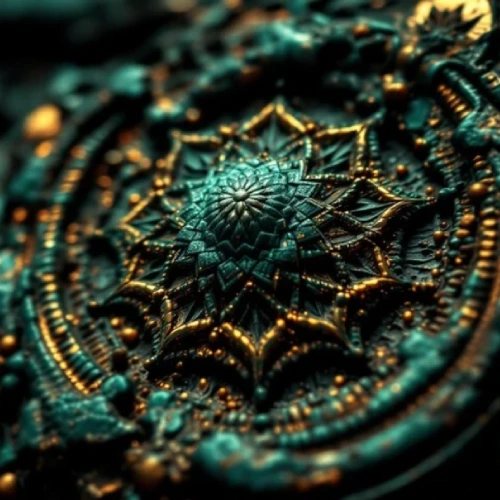The Sanxingdui archaeological site in Sichuan, China, has captivated the world with its enigmatic bronze artifacts, including life-sized human figures, elaborate masks, and sacred trees. These 3.000-year-old treasures, discovered in 1986. challenge conventional understanding of ancient metallurgy. Recent breakthroughs in digital restoration technology have unveiled the secrets of their creation, particularly the lost-wax casting technique used in crafting intricate tin-bronze alloys. This article explores how modern science breathes new life into ancient craftsmanship, bridging the gap between past and present.

The Enigma of Sanxingdui’s Tin-Bronze Artifacts
Sanxingdui’s bronzes are predominantly made of tin-bronze (Cu-Sn-Pb alloy), with tin content ranging from 3% to 25% depending on the artifact’s function . For example:
Human masks and statues: Low tin (5%) and high lead (23–27%) for flexibility and durability.
Ritual vessels (zun and lei): Higher tin (23–25%) for finer details and corrosion resistance .
The discovery of highly radiogenic lead in these bronzes suggests a shared metal sourcing network with the Shang Dynasty in central China, hinting at cross-cultural technological exchange . However, the casting techniques—particularly the use of lost-wax casting—remained shrouded in mystery until recent digital advancements.
Unveiling the Lost-Wax Casting Technique
The lost-wax method, long believed to have originated in the Warring States period (475–221 BCE), involves:
Wax modeling: Crafting intricate wax prototypes.
Ceramic investment: Encasing the wax in fire-resistant clay.
Burnout: Melting the wax to create a hollow mold.
Metal casting: Pouring molten bronze into the mold.
In 2025. a bombshell study revealed that Sanxingdui’s Bronze Zun from Pit 8 utilized this technique, confirmed by:
Wax residues (0.3–0.5 mm thick) detected on the inner surface.
X-ray tomography showing continuous cavities in complex 纹饰,a hallmark of lost-wax casting .
This discovery pushes the technique’s timeline back 500 years, proving the ancient Shu civilization mastered advanced metallurgy millennia ahead of its time.
Digital Tools: Breathing Life into Fragments
Restoring Sanxingdui’s fragmented bronzes requires precision and innovation. Here’s how modern technology aids the process:
1. 3D Scanning: Capturing Every Detail
Handheld laser scanners (e.g., Rigel Scan Plus) capture 1.35 million data points per second, creating high-resolution 3D models without physical contact .
Case study: The Bronze Sacred Tree (2.88 meters tall) was reconstructed from 69 fragmented branches. 3D scans allowed virtual alignment, mimicking the original tree’s layered structure .
2. Industrial CT: Peering Inside
Industrial computed tomography (CT) slices artifacts into 1.000+ cross-sectional images, revealing internal structures. For example:
Zeng Houyi Zunpan (a Warring States-period vessel) was deconstructed into 98 cast components and 119 welds, exposing its "modular casting" technique .
Sanxingdui’s Bronze Tree Core was found to contain organic/inorganic supports, shedding light on ancient core-making methods .
3. Reverse Engineering: Reconstructing the Past
CAD software converts scan data into editable 3D models. Missing parts are extrapolated using symmetry analysis and comparisons with contemporaneous artifacts.
Digital mockups simulate stress distribution during casting, optimizing modern replication efforts .
Challenges and Innovations in Digital Restoration
Material Degradation
Corrosion and mineralization obscure surface details. AI-powered image processing (e.g., Generative Adversarial Networks) fills gaps and enhances texture clarity .
Digital patina replication mimics millennia-old oxidation, preserving the artifact’s historical appearance .
Complex Geometry
The Bronze Mask’s intricate facial features (e.g., protruding eyes, exaggerated ears) required multi-angle scanning and point cloud alignment to ensure accuracy .
Ethical Considerations
Restorers balance historical authenticity with preventive conservation. For instance, stainless steel supports stabilize fragile artifacts without altering original surfaces .
Case Study: Restoring the Bronze Sacred Tree
The Bronze Sacred Tree (Pit 2) exemplifies the fusion of tradition and technology:
Data Acquisition: 3D scanning of 69 branches at 0.05 mm resolution.
Virtual Assembly: Software matched fracture edges and mirrored symmetrical elements.
Physical Replication: 3D-printed wax patterns were cast using traditional lost-wax methods, producing structurally identical but non-invasive replicas for exhibition .
This approach allowed curators to display a complete tree while preserving the original fragments for future research.
The Future of Cultural Heritage Preservation
AI-Driven Alloy Simulation
Machine learning models analyze trace elements (e.g., nickel in Sanxingdui bronzes) to trace ancient trade routes and refine replication formulas .
Blockchain for Provenance Tracking
Digital twins of artifacts are stored on blockchain, ensuring transparency in restoration processes and combating forgery .
Interactive Education
AR/VR experiences let users "assemble" virtual bronzes, fostering engagement with ancient craftsmanship. For example, the Sanxingdui Museum’s virtual gallery offers 360° views of reconstructed artifacts .
Conclusion: A Bridge Between Eras
The digital revival of Sanxingdui’s lost-wax casting technique is more than a technical feat—it’s a testament to human ingenuity across millennia. By merging 3D scanning, industrial CT, and AI, modern scientists not only restore ancient treasures but also decode the scientific principles behind them. As Dr. Li Wei, lead conservator at the Sanxingdui Museum, notes: “These bronzes are not just artifacts—they’re textbooks. Digital technology allows us to read them page by page.”
For heritage professionals and enthusiasts alike, the Sanxingdui project demonstrates that preserving the past is as much about innovation as it is about reverence.